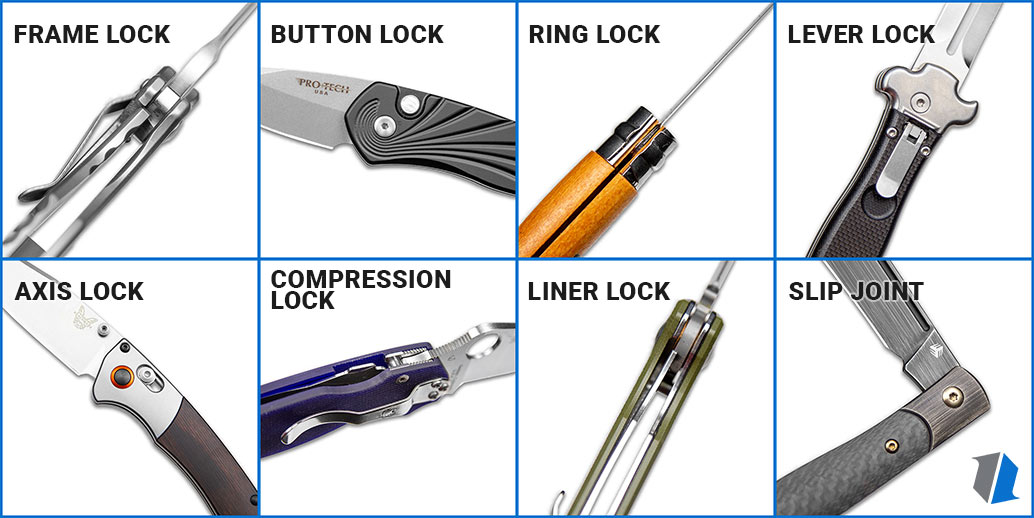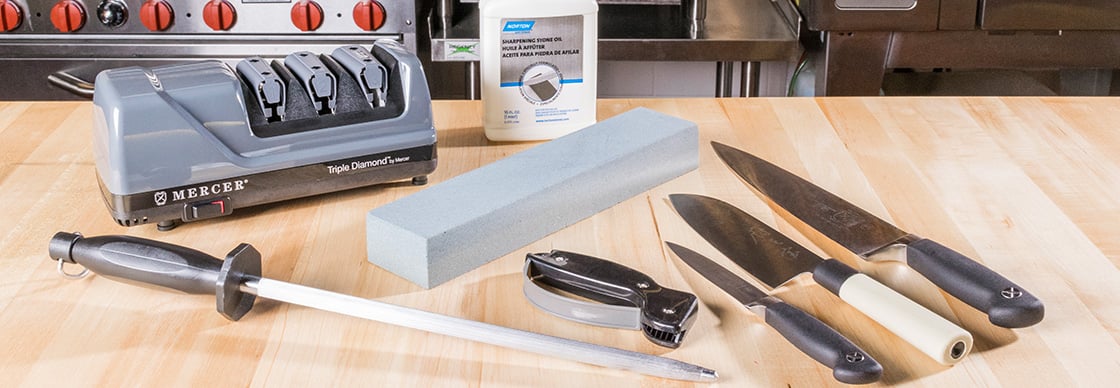Maintenance Essentials: Keeping Your Automatic Knife in Prime Working Condition
- Posted on

Automatic knives represent sophisticated engineering marvels that combine mechanical precision with practical functionality. Unlike traditional folding knives, automatic knives feature complex spring mechanisms, precision-machined components, and intricate deployment systems that require specialized maintenance approaches to ensure optimal performance throughout their service life. Whether you own a tactical automatic knife for professional use or a collector-grade piece, proper maintenance is the key to preserving both functionality and investment value.
The spring-loaded deployment mechanism that makes automatic knives so efficient also introduces unique maintenance requirements that differ significantly from manual folders. Understanding these requirements and implementing a consistent maintenance routine will ensure your automatic knife continues to deploy reliably, lock securely, and perform at peak efficiency for years to come.
Understanding Automatic Knife Mechanisms

Before diving into specific maintenance procedures, it's essential to understand the mechanical complexity of automatic knives. These precision instruments incorporate several critical components that work together to achieve instant blade deployment. The heart of any automatic knife is its spring system, which stores potential energy and releases it instantly when activated. This spring system works in conjunction with carefully engineered trigger mechanisms, locking systems, and precision-machined pivot points.
The complexity of these mechanisms varies depending on the activation method your knife employs. As detailed in our comprehensive guide on Button vs. Slide Activation: Comparing Different Automatic Knife Designs, different activation systems present unique maintenance considerations. Button-activated models typically feature more complex internal mechanisms with additional components that require specific attention, while slide-activated designs may incorporate different spring configurations and safety mechanisms.
The precision required for these mechanisms to function properly means that even small amounts of debris, corrosion, or wear can significantly impact performance. Regular maintenance prevents these issues from developing and ensures consistent operation when you need your automatic knife most.
Essential Maintenance Tools and Supplies

Proper automatic knife maintenance requires specific tools and supplies designed for precision mechanical work. Your maintenance toolkit should include high-quality lubricants specifically formulated for knife mechanisms, precision cleaning tools, and appropriate disassembly tools if your knife design permits user servicing.
Quality knife lubricants are perhaps the most critical maintenance supplies. Unlike general-purpose oils, specialized knife lubricants are formulated to provide long-lasting protection without attracting debris or gumming up over time. Look for lubricants that offer corrosion protection, temperature stability, and compatibility with the materials used in your specific automatic knife.
Cleaning supplies should include lint-free cloths, precision brushes, and compressed air for removing debris from hard-to-reach areas. Cotton swabs and toothpicks can be invaluable for detailed cleaning work, while isopropyl alcohol provides effective degreasing and sanitization. For knives that see heavy use in demanding environments, ultrasonic cleaners can provide thorough cleaning of components that can be safely disassembled.
Daily Care and Handling Practices
The foundation of automatic knife maintenance begins with proper daily care and handling practices. These simple habits can prevent many common maintenance issues and extend the life of your knife significantly. After each use, wipe down your automatic knife with a clean, dry cloth to remove moisture, fingerprints, and any debris that may have accumulated during use.
Pay particular attention to the activation mechanism, as this area tends to accumulate pocket lint, dust, and other debris that can interfere with smooth operation. Gently actuate the deployment mechanism several times after cleaning to ensure smooth operation and to distribute any lubricant that may be present in the mechanism.
Storage practices play a crucial role in long-term knife health. Store your automatic knife in a dry environment, preferably in a protective case or sheath that prevents contact with other objects that could cause scratches or dings. Avoid storing knives in humid environments or in contact with materials that could cause corrosion.
Weekly Inspection and Basic Maintenance
Implementing a weekly inspection routine helps identify potential issues before they become serious problems. Begin your inspection by examining the blade for any signs of corrosion, chips, or excessive wear. Check the edge retention and sharpness, noting any areas that may require attention.
Inspect the handle and activation mechanism for any signs of looseness, wear, or damage. Test the deployment mechanism multiple times to ensure consistent, smooth operation. The blade should deploy completely and lock securely every time, without hesitation or binding. Any variation in deployment speed or consistency may indicate the need for lubrication or more detailed maintenance.
Check all screws and fasteners for tightness, but avoid over-tightening, which can damage threads or distort components. If your automatic knife features removable pocket clips or other accessories, inspect these components for proper attachment and function.
During your weekly maintenance, apply a small amount of appropriate lubricant to the pivot points and activation mechanism. Use lubricant sparingly, as excess lubricant can attract debris and actually impede operation. Work the mechanism several times after lubrication to distribute the lubricant evenly throughout the moving parts.
Monthly Deep Cleaning Procedures
Monthly deep cleaning provides an opportunity to address areas that daily and weekly maintenance may not reach. This process typically involves more thorough disassembly, depending on your knife's design and manufacturer recommendations. Always consult your knife's documentation before attempting any disassembly, as improper procedures can void warranties or damage precision components.
For knives that permit user disassembly, begin by carefully removing screws and components in the reverse order of assembly. Keep track of all parts and their orientation, taking photographs if necessary to ensure proper reassembly. Clean all components thoroughly with appropriate solvents, removing old lubricant, debris, and any corrosion that may have developed.
Pay special attention to spring mechanisms and trigger components, as these areas are critical for proper function and are often difficult to access during routine maintenance. Use compressed air to remove debris from spring coils and mechanism recesses, followed by careful lubrication of all moving parts.
For knives that don't permit user disassembly, focus on external cleaning and lubrication of accessible components. Use compressed air to blow out debris from mechanism gaps, followed by careful application of lubricant to accessible pivot points and moving parts.
Blade Maintenance and Sharpening

Maintaining blade sharpness is crucial for automatic knife performance, but sharpening automatic knives requires special considerations due to their spring-loaded mechanisms. Traditional sharpening methods may not be suitable for all automatic knife designs, particularly those with non-removable blades or complex locking systems.
For automatic knives with removable blades, conventional sharpening techniques can be applied once the blade is safely separated from the mechanism. However, many automatic knives feature permanently mounted blades that require sharpening while attached to the handle mechanism.
When sharpening automatic knives with fixed blades, ensure the blade is locked in the open position and cannot accidentally close during the sharpening process. Use appropriate safety measures and consider professional sharpening services for valuable or complex automatic knives where improper technique could cause damage.
Regular blade maintenance also includes checking for proper blade alignment and centering. A properly maintained automatic knife should have the blade centered in the handle when closed, with even gaps on both sides. Misalignment can indicate wear in the pivot system or improper reassembly after maintenance.
Troubleshooting Common Issues
Even with proper maintenance, automatic knives may occasionally develop performance issues that require specific troubleshooting approaches. Slow or inconsistent deployment is one of the most common problems, typically caused by insufficient lubrication, debris accumulation, or spring fatigue.
If your automatic knife deploys slowly or inconsistently, begin troubleshooting by thoroughly cleaning the mechanism and applying fresh lubricant. Work the mechanism repeatedly to distribute lubricant and remove any debris that may be binding moving parts. If the problem persists, the issue may be related to spring tension or wear in critical components that require professional attention.
Blade play or looseness in the deployed position can indicate wear in the pivot system or locking mechanism. This issue should be addressed promptly, as excessive blade play can compromise safety and cutting performance. Check all fasteners for proper tightness and inspect pivot bushings or bearings for wear.
Activation mechanism problems, such as buttons that stick or slides that bind, often result from debris accumulation or inadequate lubrication. Clean the activation mechanism thoroughly and apply appropriate lubricant, working the mechanism repeatedly to ensure smooth operation.
Professional Applications and Maintenance Schedules
The maintenance requirements for automatic knives vary significantly based on their intended use and operating environment. Professional users who rely on automatic knives in demanding applications require more frequent and thorough maintenance than casual users or collectors. Our detailed guide on Professional Applications: Industries Where Automatic Knives Prove Their Worth explores how different professional environments impact maintenance requirements and schedules.
Emergency responders, military personnel, and other professionals who depend on their automatic knives for critical tasks should implement daily inspection routines and weekly maintenance procedures. These users often operate in harsh environments where exposure to moisture, debris, and extreme temperatures can accelerate wear and compromise reliability.
Industrial users may require specialized maintenance approaches based on their specific work environments. Knives used in manufacturing, construction, or marine environments may need more frequent cleaning and lubrication, along with specialized protective treatments to prevent corrosion and wear.
Long-Term Storage and Preservation
Proper long-term storage techniques are essential for maintaining automatic knives that see infrequent use or are part of collections. Extended storage without proper preparation can lead to corrosion, spring fatigue, and mechanism deterioration that may be difficult or impossible to reverse.
Before long-term storage, thoroughly clean and lubricate your automatic knife, paying particular attention to all moving parts and spring mechanisms. Apply a light coating of appropriate preservative to all metal surfaces, including the blade, handle components, and internal mechanisms.
Store automatic knives in a controlled environment with stable temperature and humidity levels. Avoid storage in basements, attics, or other areas subject to temperature fluctuations and high humidity. Consider using desiccant packets or climate-controlled storage solutions for valuable or sensitive knives.
Periodically inspect knives in long-term storage, exercising mechanisms and refreshing lubricants as needed. Even knives in storage benefit from occasional operation to prevent springs from taking a permanent set and to distribute lubricants throughout moving parts.
Conclusion
Maintaining your automatic knife in prime working condition requires understanding its complex mechanisms, implementing consistent maintenance routines, and using appropriate tools and techniques. The investment in proper maintenance pays dividends in reliability, performance, and longevity, ensuring your automatic knife remains a dependable tool for years to come.
Whether you're a professional who depends on your automatic knife for critical tasks or an enthusiast who appreciates fine mechanical craftsmanship, proper maintenance is essential for preserving both function and value. By following the maintenance essentials outlined in this guide, you'll ensure your automatic knife continues to perform at its peak, ready to serve you whenever precision cutting performance is required.

